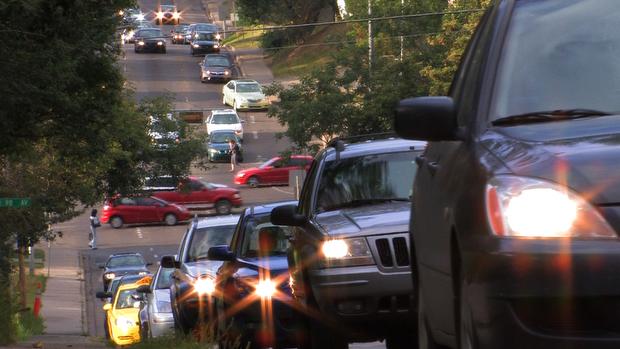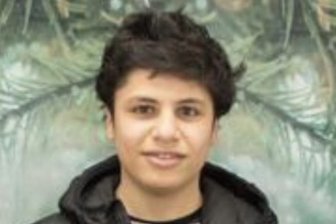EDMONTON – Traffic safety expert Karim El-Basyouny can foresee a future when virtually no motorists are killed on Edmonton streets.

“We’re strategically positioned to achieve that target. How soon that will happen, I cannot tell, but I can tell you we’re in one of the best positions in Canada to achieve that target,” he said Friday.
“It’s a fundamental change in the way we think. We need to acknowledge that speeds contribute to that.”
El-Basyouny, 30, is the University of Alberta’s first urban traffic safety research chair, working on ways to reduce the danger to drivers in built-up areas.
It’s a unique position in North America, paid for equally by the U of A and a $1.5-million endowment fund from the City of Edmonton.
Currently, work in the field looks largely at rural roads, where vehicles are typically limited to cars and trucks, and speeds are faster, and less at cities, which feature lower speeds and a greater mix of private vehicles, transit, bicycles and motorcycles.
But more than 70 per cent of injuries happen in urban settings, El-Basyouny said.
“That’s a big problem, because in the next decade or two, there will be a big population shift. They’re going to exert a toll on the transportation system … How do we position ourselves to improve safety?”
The Egyptian-born, United Arab Emirates-raised engineer took his graduate studies at the University of British Columbia.
One project in which he was involved considered whether installing about 1,000 neighbourhood stop signs that weren’t required due to traffic volumes reduced crashes.
- As Loblaw boycott begins, what to know about all the company’s brands
- Poilievre allowed back in House of Commons after getting kicked out Tuesday
- $34B Trans Mountain pipeline expansion project opens after years of construction
- N.S. man stuck abroad due to lack of available hospital beds ‘in our own province’
Researchers, who had useful information from roughly 380 of the signs, determined the number of severe collisions dropped by up to 40 per cent, El-Basyouny said.
“It forced them to reduce their speeds and pay attention to the people who were crossing. You reduce the impact.”
The best results came from requiring motorists to stop at alternate blocks rather than every intersection, which led people to push down on the gas to make up time, he said.
El-Basyouny spent a year working for Edmonton’s office of traffic safety before joining the U of A in July.
Gerry Shimko, the office’s executive director, described him as an international leader in the field who competed for his new position against a worldwide group of candidates.
“There’s very little (study) on the urban side. You would be hard-pressed to find an urban traffic chair anywhere. This is really a unique position,” he said.
“The university ends up with better qualified and better trained academics. The city ends up with a better pool of engineering students who know the city data, but would also be available if there were positions.”
While Edmonton had fewer than half the traffic injuries last year as it did at the peak of 11,000 in 2002, the number of traffic collisions rose about 20 per cent over the same period.
There were 24 people killed in road accidents in 2010.
El-Basyouny hasn’t studied these statistics, although he said a general drop in fatality rates over the last few decades because of such factors as improved road design and seatbelt legislation is flattening out.
He’s working with university colleagues to create a transportation centre of excellence with expertise in safety, planning and operations.
His class of 14 students is also looking at the best ways to reduce crashes and evaluate outcomes at Edmonton’s 14 highest-collision intersections, projects that will be considered for possible action by the city.
The team gains a huge benefit from being able to work first-hand with real data, he said.
He feels protecting people on the roads requires a combination of police enforcement, public education and engineering.
“We need to look for the problems and … solve them before they happen. I think this is our goal,” he said.
“If we make sure safety is a specific priority in (road) design, operation and maintenance, we would minimize the chance of crashes happening in the city.”



Comments